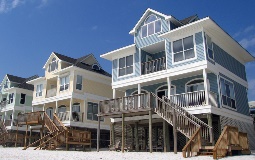Casualty Insurance
Amwins delivers primary and excess casualty insurance solutions for your clients' most complex risks.

Casualty Insurance
Amwins delivers primary and excess casualty insurance solutions for your clients' most complex risks.

Custom solutions and market clout at your fingertips
With more than 1,000 dedicated casualty professionals across the country, collaboration is in our DNA. Amwins delivers trusted consultation, market access and creative program structures to place coverage for even the most complex and layered accounts —providing value-added resources, unmatched service and expertise every step of the way.
$11.3B
annual U.S. premium placements
1,000+
dedicated professionals
700
casualty markets we place business with
Casualty areas of specialty
Data & Analytics
We harness our robust, proprietary data (Amwins DNA) to provide benchmarking and other useful reports, develop innovative products, and much more.
Claims advocacy
In-house claim advocates that help resolve coverage disputes, service issues, valuation discrepancies, and payment challenges.
Custom product development
Casualty resources + insights
Stay up to date on emerging casualty insurance trends and topicsPerils and Pitfalls of Insuring Short-Term Vacation Rentals
Between 1995 and 2000, there was a period of extreme growth in the “dot-com” industry. Venture capitalists, speculators, and investors poured millions into new business ventures that were built on ideas and concepts. During that time, the stock market flourished, and so did the secondary housing market. When the market crashed, the housing market crashed along with it. The result was an increase in the need to turn secondary homes into income-generating properties.
Today, about five percent of Americans own second homes. Of those, it is estimated that 60 percent have some sort of rental exposure.
There are numerous pitfalls concerning insurance coverage for these homes. For example:
- Most short-term vacation rentals are insured as secondary or seasonal homes
- Property owners may fail to inform their insurance agents that they are renting their homes
- Insurance agents may fail to tell the insurance company about the rental exposure
- Concealment, misrepresentation, or failure to notify insurer of a change of actual occupancy can result in the denial of a claim, lengthy legal battles, and/or immediate cancellation of coverage and unavailability of replacement insurance
The following types of policies are commonly used for vacation rentals and each have serious gaps in coverage:
- Commercial (Business) Insurance policies: typically only available for multi-family dwellings with five or more units
- Residential Dwelling policies: limited coverage for personal property and usually actual cash value (ACV)
- Homeowners policies: business liability exclusion and limited personal property coverage
- Combination policies: limited personal liability and personal property coverage
Insurance Programs Designed for Short-Term Vacation Rentals
The need for specialized insurance for short-term vacation rentals was first recognized with the introduction of AirBnB in 2008. It soon became apparent that there was a serious insurance liability coverage issue, not only for the property owners, but also for AirBnB.
AirBnB now includes primary Personal Liability coverage for the property owner (“host”), as well as first-party coverage for damage to the host’s property. However, this coverage is not a substitute for a homeowners or vacation rental policy and, most importantly, only covers the property owner (“host”) for liability or damages that occur while the home is being occupied by a guest who made their reservation on the AirBnB website.
There are several other specialty insurance programs designed for short-term vacation rentals, and each one is unique. Most online booking companies have also partnered with insurance vendors such as CSA Travel Protection, Rental Guardian, Proper Insurance, INSUREstays, and CBIZ. However, none of these vendors provide comprehensive coverage for the homeowner’s “non-business” related Property or Personal Liability exposures.
Coverage Issues
Standard homeowners insurance policies provide minimal coverage for business activities that are conducted in the home. The following scenarios explain what is covered and the coverage gaps.
Primary residence (single-family dwelling) that rents to no more than two roomers (long-term) or boarders (short-term) at a time.
- Difference between “guest” and roomer or boarder is “remuneration”
- Business Liability is not excluded
- Personal Property:
- HO 3 excludes theft from the part of the residence premises that is rented to others
- HO 5 covers theft but not breakage unless the damage is caused by theft or attempted theft
Seasonal or secondary residence occasionally rented to others
- Theft of personal property from that part of the residence rented to others is excluded (HO 3)
- If a paying person has access to the entire residence, theft of any property on the residence premises is excluded
- HO 5 covers theft, but not breakage
Business liability is excluded, except when the residence is:
- Rented on an “occasional” basis (the term “occasional” is not defined)
- Used as a single-family residence and has no more than two roomers or boarders
Other structure at the primary residence, such as a cottage, is rented to others (short or long-term)
- For HO 3 and HO 5, coverage for structures rented to others is excluded
- ISO solution is to add HO 04 40 STRUCTURES RENTED TO OTHERS endorsement, which removes both the property and business liability exclusion
- Coverage for the furnishings in that structure (landlord’s furnishings) is limited to $2,500 and theft is excluded
Condominium is rented to others (short or long-term)
- Property and Liability coverage for condo rented to others is excluded
- Property of roomers or boarders is excluded
- Theft of insured’s property while condo is rented to others is excluded
- There is no coverage for “landlord’s furnishings” like in HO 3 and HO 5
- ISO solution is to add HO 17 33 UNIT-OWNERS RENTED TO OTHERS endorsement
- Restores property coverage (still excludes theft of certain classes of property)
- Removes business liability exclusion
Property Limitations Found in Standard ISO Homeowners Policies that Affect Short-Term Rentals
- Theft of personal property from that part of a “residence premises” rented by an “insured to someone other than another “insured” is excluded in HO 3, but not HO 5
- Landlord’s furnishings such as appliances, carpeting and household furnishings are limited to $2,500 and are covered for named perils only on both HO 3 and HO 5
- Most, if not all, homeowners policies and rental endorsements EXCLUDE theft of jewelry, watches, furs, fine art, antiques, collectibles, porcelain, etc. while the premises are rented to others
Personal Injury Exclusions Found in Standard ISO Homeowners Policies that Affect Short-Term Rentals
The ISO Personal Injury Endorsement (HO 04 82 10 00) excludes “injury” arising out of or in connection with a business conducted from the insured location. However, the exclusion does not apply to the rental of an insured location.
While many insurers offer a homeowners rental endorsement, some have specifically restricted Personal Injury to the premises shown in the declaration. This is a problem if the insured also uses the covered location as their primary residence because it restricts personal injury, which is otherwise not location specific.
Conclusion
Many carriers now offer specific homeowners rental endorsements that address each of the coverage issues above. These complement the standard coverages and can provide a policy that protects the client’s personal and short-term rental insurance needs in one comprehensive policy.
When performing a coverage review with a client for a primary or secondary home, always ask if there is any rental exposure at any time. Understanding the actual occupancy and exposure will reduce potential – and costly – E&O claims and protect your reputation.
About the Author
This article was written by Kris Zebratski, CIC, CPRM, TRS, Senior Vice President and Personal Lines specialist with AmWINS Access in San Francisco, CA.
- Casualty
- Property
- Property & Casualty
- Small Business
Filling excess placements despite changes in exposure.
When an insured with five New York City hotels converted operations to COVID-19 shelters for the local homeless population, the change in exposure threw a wrench in the renewal. While the general liability carrier stayed on the account, the excess carrier discontinued coverage. The retail agent contacted Amwins to fill the excess coverage for these locations.
With a local government agency managing and operating these shelters, the insured’s exposure was lessened. However given the venue, occupancy and market conditions, filling out the program was still an uphill climb. Through our market access and industry expertise, we were able to fill the policy with just two layers - securing a big win for our retail client and their insured.


